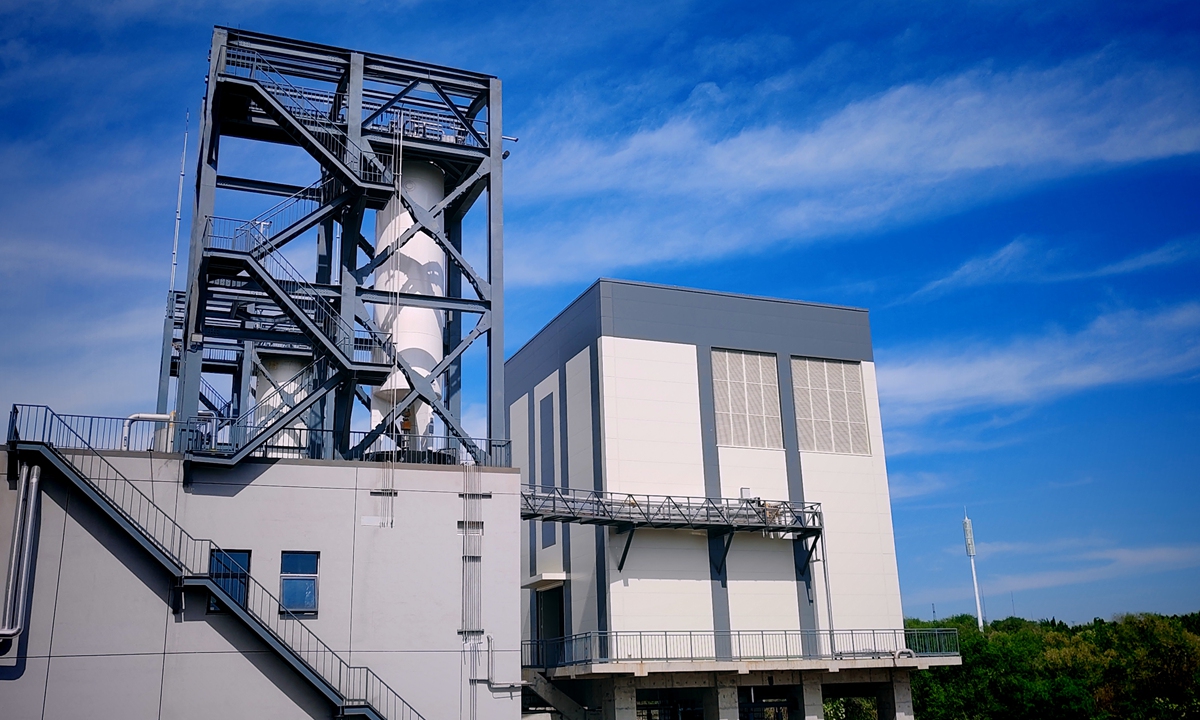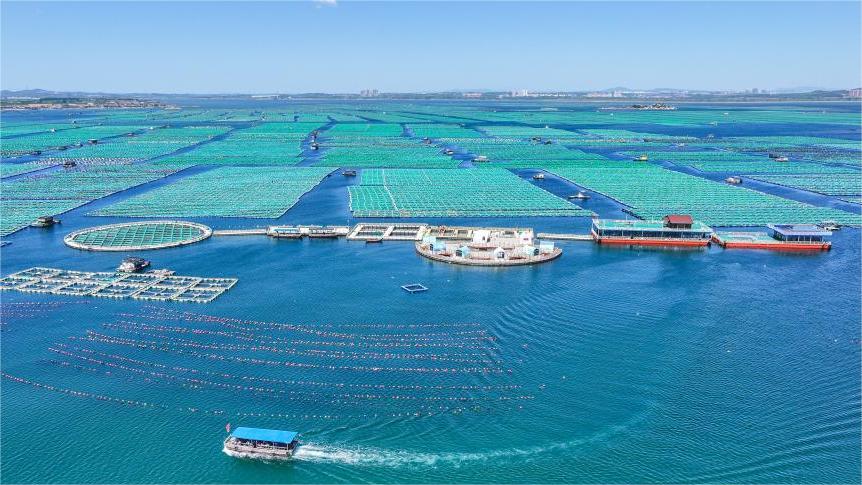China completes construction of Asia’s largest high-altitude rocket test facility

China completes construction of Asia's largest high-altitude rocket test facility on May 15, 2024. Photo: Courtesy of China Aerospace Science and Technology Corporation
Asia's largest and China's first vertical high-altitude simulation test stand for rocket engines has successfully completed an ignition test in Beijing, Global Times learned from the developers on Thursday.
The stand was developed and constructed by the Institute 101 of the Sixth Academy of the state-owned space giant China Aerospace Science and Technology Corporation (CASC).
The facility can simulate high-altitude conditions for engines in a vacuum environment below one kilopascal and sustain high-altitude simulation tests for thousands of seconds, according to the developers in a statement sent to the Global Times.
The successful ignition test on Wednesday proved that the test stand is fully constructed and operational, filling the gap in China's capability for vertical high-altitude simulation tests of liquid rocket engines. It will provide crucial support for major aerospace projects in China and offer important technical support for the construction of testing conditions for heavy-lift rockets, developers revealed.
The test stand has full active ejection capability throughout the process, with overall comprehensive indicators reaching internationally advanced levels.
It uses advanced super-single-stage ejection technology, significantly enhancing ejection capability, efficiency, and reliability, while reducing equipment scale and operational complexity. A multi-machine parallel system for the steam generator was developed, breaking through high-reliability torch ignition technology and stable start-up technology for extrusion and pump pressure multi-modes. The system has redundancy and real-time fault diagnosis capabilities, providing excellent performance and a wide range of applications.
The test stand project has also marked the largest in scale, most technically challenging, and shortest in construction duration among the test facility construction projects undertaken by the institute.
The institute vowed in the statement that it will make full use of the test stand, constantly elevating China's liquid engine test and technology verification capabilities and making a greater contribution to the country's cause of building into a space power.
Previously, China had successfully conducted a trial run for a high-thrust test stand for liquid-propellant rocket engine in Tongchuan, Northwest China's Shaanxi Province in April 2023, marking the completion of the test bench with a load capacity of 700 tons of thrust, also the largest of its kind in Asia.
Space observers hailed the test and technology verification facility's construction would further support the country's major projects including the development of heavy-lift carrier rockets, manned lunar landings and deep space exploration.
China successfully launched its Chang'e-6 lunar probe in early May, aiming to complete a sampling mission and return from the lunar far side. The mission also marked the first step of the basic construction phase of the International Lunar Research Station (ILRS).
Chang'e-7 is scheduled for launch around 2026 to conduct environmental and resource surveys at the lunar south pole; Chang'e-8 is planned for launch around 2028 to conduct in-situ resource utilization experiments on the moon.
By 2035, the basic version will be completed, centered around the lunar south pole, with comprehensive scientific facilities equipped with basic functions and elements, conducting regular scientific experiments and a certain scale of resource development and utilization.
By 2045, the expanded version will be completed, with the lunar orbit station as the hub. Featuring fully equipped and substantially scaled facilities, and stable operations, it will conduct comprehensive scientific research on the moon and in-depth resource development and utilization, as well as conduct technical verification and scientific experiments related to a manned mission to Mars.
Wu Weiren, chief scientist and director of China's Deep Space Exploration Laboratory (DSEL) and an academician at the Chinese Academy of Engineering, also revealed in April that China plans to launch the Tianwen-2 mission around 2025, and to carry out flyby exploration and return samples from a small asteroid located about 40 million kilometers away from Earth. Around 2030, Tianwen-3 is planned to be launched to execute a sample return mission from Mars, Wu said.
Photos
Related Stories
- China’s Chang'e-6 lunar probe enters circumlunar orbit after near-moon braking
- China's Long March-6C rocket makes maiden flight
- China's modified Long March-8 rocket completes fairing separation test
- Rocket sends Queqiao 2 relay satellite to lunar orbit
- Chinese private rocket company readies 'Falcon 9 equivalent' for maiden flight
- China completes new round of tests on reusable liquid rocket engine
Copyright © 2024 People's Daily Online. All Rights Reserved.









